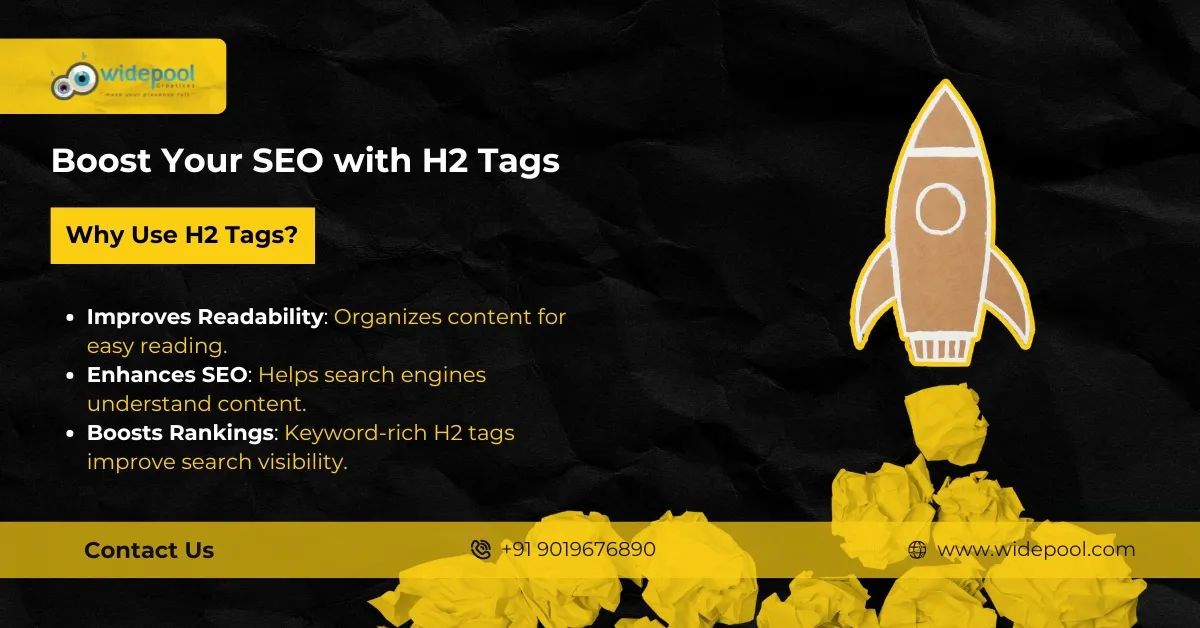Have you ever wondered why a travel blog you follow always comes up on the first page of your Google search results? The reason is SEO (search-engine-optimization). SEO happens to be the art & science of improving a website’s visibility in search engines like Google, Bing, Yahoo etc. It helps a website rank higher in search engine results by optimizing various aspects of a website, such as keywords, meta tags, & content structuring. This increased visibility can lead to amplified website traffic, better user-level engagement, and eventually, more leads turning into conversions. Further reading will give you a glimpse on some examples of well-structured content using H2 tags, which is an important part of the SEO exercise.
Significance of H2 Tags in SEO
H2 tags have an influential role in SEO! These tags are basically the subheadings, which help in organizing the content of a web page/blog, making it easier for both readers as well as search engines to fathom the structuring & hierarchy of any information presented online. Search engines use these H2 tags for establishing the relevance & context of your content. This can surely have a substantial impact on the rankings of your webpage. When used appropriately, these tags can enhance readability, and also place keyword-rich phrases naturally all through your content, further upgrading your overall SEO exercise.
Well-Structured Content Using H2 Tags
Consider a haphazard page of content where you have no idea what you are going to read in the next paragraph. And then consider a well-structured piece of content, where each paragraph is strategically sectioned using H2 tags. Isn’t the latter one giving you a better hit? Subheadings surely enhance readability. Properly sectioned pieces of content with astu te hierarchy helps the readers to navigate through the page much more easily. So, you must divide your text into manageable sections. Each H2 tag must introduce a new idea/topic that should obviously be related to the main topic of your page. Such an approach tends to augment user experience by making your content easily scannable. Not just this, such structured writing signals to search engines that your web page content is properly organized and is pretty relevant.
Examples of Well-Structured Content Using H2 Tags
Let us say you are writing a blog post with some recipe.
- Your first para is about ‘Introduction’ so you can put ‘Introduction’ as your first sub-heading (H2 tag)
- Your first para is about the ‘Ingredients’ so you can put ‘Ingredients’ as your second sub-heading (H2 tag)
- Then, ‘step-by-step instructions’ can be your next sub-heading (H2 tag)
- All the instructions you can sub section further giving each title an H3 tag
- Then, ‘Cooking tips and tricks’ can be your next sub-heading (H2 tag)
- All the tips you can sub section further giving each title an H3 tag
- Further, your last para can be about ‘Nutritional information’ as the last sub heading with H2 tag
Link up with Widepool Creatives Team for SEO Success of Your Business!
Our team focusses on SEO strategies tailored to the specific needs of your business. Our team very well understands this fact that well-structured content with H2 tags leads to greater times spent by visitors on pages, reduced bounce rates, and higher rankings. So, we create the content accordingly. With such expertise & proven techniques, we can help you augment your rankings further, for you to achieve greater success of your business online.

